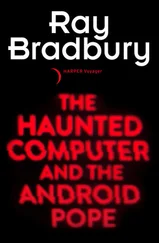In 1984, however, revenues were way down. Advertising pages were off by more than 50 percent, given that companies struggling to find the cash to meet their payroll don’t place a lot of ads. There was a lot of competition for those dwindling ad dollars as well, for it seemed that everyone in America wanted to start a computer magazine. In the meantime, the shakeout had made many of whatever receivables Softalk had uncollectible. And then there were the other magazines in the Softalk empire— ST Game, Softalk for the IBM, and St Mac. Compared with Softalk, they were poor, starved-looking little creatures that siphoned off funds from the parent magazine and diluted the efforts of the staff. It all added up to trouble.
Softalk had always disdained acquisition offers from large publishers like Prentice-Hall and ABC. It turned to them at this point but was told that it wouldn’t receive any money for the company. The best it could hope for would be the continued survival of the magazine. Margot wasn’t sure she wanted that. It was one thing to work for herself for peanuts; it would be quite another state of affairs to work for somebody else for next to nothing. In the end, Margot reconciled herself to the sale. A couple of Softalk’s shareholders could not be, however, and so, on August 30, 1984, Softalk closed its doors.
The employees held several wakes that week. There was an oddly festive air about the place at the very end. David Durkee’s long-suppressed boom box, which had always been turned way down so that others could work, was shaking the offices with hour after hour of old Beatles tunes as the staffers cleared out their desks. Maybe it was just the relief of having some resolution of the situation, even if that resolution was the magazine’s demise. After all, life goes on even if magazines die. At the week’s end, the former employees scattered. Among them was my youngest sister, Erin, who had been working for Softalk over the summer.
Right near the summit, a lot of people discovered that the top of the software mountain was a slippery slope. When the shakeout started, it didn’t seem to matter which hardware market they staked the future of their software company on. Sirius and Softalk had hitched their fortunes to those of Apple. Synapse was essentially an Atari company. Sierra had moved into IBM’s orbit. And the Human Engineered Software (HES) comet waxed with the rapidly rising fortunes of Commodore and just as quickly waned.
In 1980, a twenty-five-year-old programmer from Riverside, California, Jay Balakrishnan, founded Human Engineered Software as a means of selling a programmer utility that he had written. After two years of working at it, Jay discovered that he didn’t enjoy running a business nearly as much as he enjoyed programming, and that in fact he was also a far better programmer than businessman.
So far, this doesn’t sound like your entrepreneurial legend. But strange Fortune is about to step in, as she so often seems to do in the software world. Jay just happened to be ready to sell his minuscule company when USI International, a privately owned supplier of microcomputer components, decided that it wanted to get into software. A software company that already exists has certain advantages, even if the company’s assets are very small. And besides, “Human Engineered Software” is a pretty jazzy name. Jay sold his company to USI.
HES operated as a division of USI for about sixteen months, with Jay staying on as vice president. By the summer of 1983, USI was in deep financial trouble, for reasons largely unrelated to the software division. USI needed cash to stay afloat. Software companies were still hot items that summer, so USI “spun off” HES and persuaded three investors to kick in more than a million dollars each for equity in the new independent company. Of the millions of dollars invested, most was immediately spent to pay off short-term debts incurred previously by USI/HES. The new company really received only $1.3 million for its own needs.
This new HES was a far cry from Jay’s original creature. Indeed, although Jay was still a vice-president (of licensing and acquisitions), he was no longer seen as one of the “line” officers of the company. He owned only about 1 percent of the new HES. A new professional management team was brought over, headed by Ted Morgan, previously general manager of the Computer Products Division of USI. Before that he had spent thirteen years at Xerox in sales and marketing positions. He is an impressive figure, tall with gray-flecked hair, and he looks the part of a chief executive officer. Morgan was a salesman, and his purpose all his adult life had been to get revenues up. Period. He was able to do this at HES as well. In his first year at the helm he raised that all-important statistic almost tenfold to more than $12 million. At the same time, however, the company lost millions.
HES was caught unprepared by the demise of the Commodore VIC market and suffered a bloodbath of returns. Unlike the book publishing and record industries, which have for years factored into their projections the possibility that products that don’t sell fast will be sent back by retail vendors, HES and other software publishers didn’t fully learn about the economics of returns until 1984. Compounding the problem was the fact that these HES programs were all cartridge products rather than floppy disks. Cartridges cost the publisher five to ten times more than disks. And if they come back, they can’t be recycled.
But not only had HES been selling exclusively cartridge products—it had also been making them with chips known as EPROMs rather than with ROMs. EPROMs have the advantage that they can be built in about half the time as ROMs (usually five to six weeks instead of ten to twelve weeks). But they are terribly expensive.
In June 1984, Egil Juliussen, chairman of the market research firm Future Computing, was quoted as calling HES the “number one independent software company in 1984.” By the end of the summer, however, HES was on the block. In October, HES filed a bankruptcy petition in federal court. But the biggest surprise didn’t come until the week following the Chapter 11 announcement. Another software company announced that it had acquired HES by purchasing all of its common stock in a straight cash deal. The company? Our old friends from Eugene—Avant Garde. Shortly before this book was published, Avant Garde’s offer was blocked by the judge in bankruptcy court. The deal fell through, and HES disappeared.
By the end of 1984 several of the software people had put a close on their careers in the home microcomputer industry, voluntarily and otherwise. Others, far fewer, managed to survive and even to grow. All the survivors saw their enterprises evolve into something quite different from what they had started out to do. Software people, with very few exceptions, weathered drastic changes, for better or worse, in 1984.
Dan Fylstra and Peter Jennings’s VisiCorp, the first of the quick-growth giants of the software industry, publisher of the program that transformed Apple from a hobbyist company to a serious competitor of IBM, disappeared—absorbed by a start-up company called Paladin. Fylstra left the company and the microcomputer industry. Co-founder Peter Jennings, creator of that chess program I once sought in Boston, took off for Europe. And in April 1985, Lotus announced that it was buying Software Arts.
Bob Leff and Dave Wagman continued to capitalize on their blend of luck and business savvy that made Softsel successful in the first place. In contrast to all the business disasters of 1984, Softsel managed to increase its annual revenues by 70 percent over those of 1983 while increasing its inventory by only 7 percent.
Читать дальше










